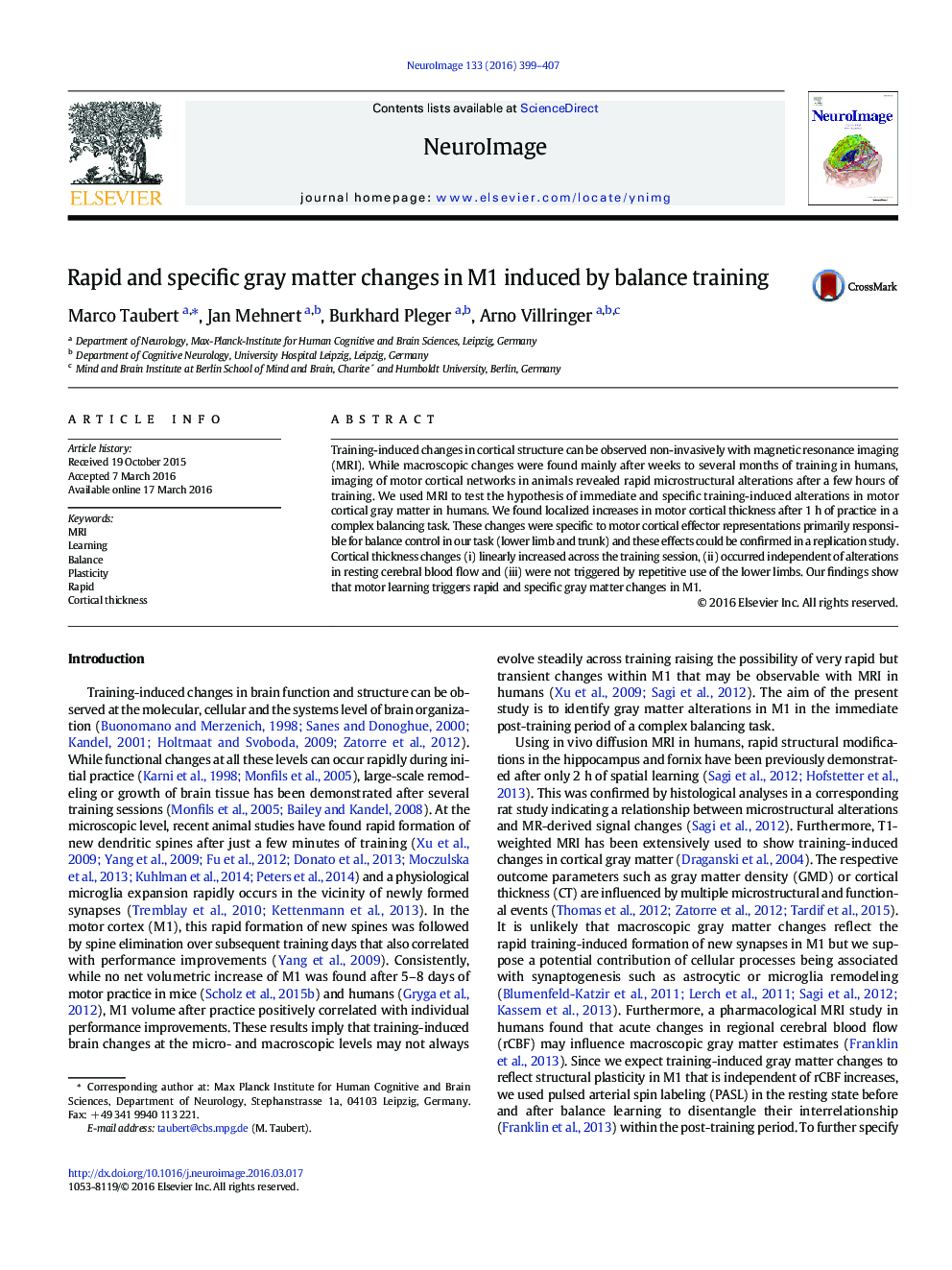| Article ID | Journal | Published Year | Pages | File Type |
|---|---|---|---|---|
| 6023595 | NeuroImage | 2016 | 9 Pages |
â¢Rapid motor cortical thickness (CT) increase after balance trainingâ¢Replication of CT effect and linear increase across trainingâ¢CT increase not related to change in resting cerebral blood flowâ¢No CT change after repetitive use of lower limbs (active control condition)
Training-induced changes in cortical structure can be observed non-invasively with magnetic resonance imaging (MRI). While macroscopic changes were found mainly after weeks to several months of training in humans, imaging of motor cortical networks in animals revealed rapid microstructural alterations after a few hours of training. We used MRI to test the hypothesis of immediate and specific training-induced alterations in motor cortical gray matter in humans. We found localized increases in motor cortical thickness after 1Â h of practice in a complex balancing task. These changes were specific to motor cortical effector representations primarily responsible for balance control in our task (lower limb and trunk) and these effects could be confirmed in a replication study. Cortical thickness changes (i) linearly increased across the training session, (ii) occurred independent of alterations in resting cerebral blood flow and (iii) were not triggered by repetitive use of the lower limbs. Our findings show that motor learning triggers rapid and specific gray matter changes in M1.
